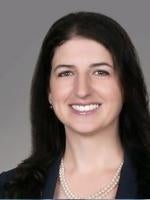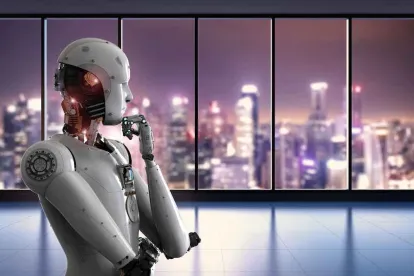On September 22, 2022, the U.S. Patent and Trademark Office (USPTO) directed patent practitioners to current case law and sections of the Manual of Patent Examining Procedure (MPEP) as reminders as the patent practitioners continue to work in the Artificial Intelligence (AI) technology space. A summary of these reminders (and links to more information) are provided herein.
MPEP Sections to Know – Especially for AI Inventions
A couple key areas of concern for applications that are directed to AI inventions are (1) patent subject matter eligibility and (2) an enabling disclosure. The highlighted sections included MPEP 2106, MPEP 2181, and MPEP 2173.05(g).
MPEP 2106 provides general guidance on subject matter eligibility, including defining that the claimed invention must be to one of the four statutory categories, the claimed invention must also qualify as patent-eligible subject matter (e.g., the claim must not be directed to a judicial exception unless the claim as a whole includes additional limitations amounting to significantly more than the exception). The section also provides a flow chart explaining how examiners must analyze claims to determine if they are directed to patent eligible subject matter (under Step 1, Step 2A Prong One, Step 2A Prong Two, and Step 2B), and also provides a handful of helpful examples of both eligible and non-eligible claims. For example, specific to AI, MPEP 2106.03 describes that products that do not have a physical or tangible form, such as information (often referred to as “data per se”) or a computer program per se (often referred to as “software per se”) when claimed as a product without any structural recitations, are not directed to any of the statutory categories and thus do not recite patent-eligible subject matter.
MPEP 2181 provides general guidance for examining means-plus-function (35 U.S.C. 112(f)) limitations in order to avoid a claim that is indefinite. In these instances, the means-plus-function analysis can be invoked by using the terms “means” or “step” in a claim, or “Generic Placeholder” terms are used in place of “means” or “step.” To overcome this interpretation, the Applicant can (1) present a sufficient showing to establish that the claim limitation recites sufficient structure to perform the claimed function so as to avoid interpretation under § 112(f); or (2) amend the claim limitation in a way that avoids interpretation under § 112(f) (e.g., by reciting sufficient structure to perform the claimed function).
MPEP 2173.05(g) discusses functional limitations that do not invoke 35 USC 112(f), but can still render the claims indefinite. Under this section, the claim recites a feature “by what it does rather than by what it is” (e.g., as evidenced by its specific structure or specific ingredients). Unlike means-plus-function claim language that applies only to purely functional limitations, functional claiming often involves the recitation of some structure followed by its function. For example, the claim may recite a conical spout (the structure) that “allow[ed] several kernels of popped popcorn to pass through at the same time” (the function). Applicant should be careful to not draft claims that are indefinite for reciting functional limitations.
Key PTAB and USPTO Petition Decisions Pertaining to AI
As of the meeting date, two decisions provide a good illustration of the AI patent landscape today. The decisions are: Ex parte Hannun (formerly Ex parte Linden), 2018-003323 (April 1, 2019), which applies the 2019 Patent Eligible Guidance (PEG) to a method for “improving the transcription of speech into text” invention, and In re Appl. No. 16/524,350 (“DABUS”), which holds that inventorship must be limited to natural persons, and not AI/machines. Additional detail on each case is provided below.
In Ex parte Hannun, the patent at issue claimed a system and method for improving a transcription of speech into text. The PTO examiner rejected the claims because they allegedly were not directed to patent eligible subject matter. For example, the PTO examiner asserted that the claims were merely directed to “mathematical relationship/formula” and also “certain methods of organizing human activity,” while also asserting that “since human can listen to an audio file and transcribe the audio data into text data which can all be done mentally.” The Applicant appealed, and the Board agreed, that the claim was directed to patent eligible subject matter for several reasons. For example, under the Step 2A Prong One analysis, the Board asserted that “[w]hile transcription generally can be performed by a human, the claims here are directed to a specific implementation including the steps of normalizing an input file, generating a jitter set of audio files…” The Board also asserted that “… the claims do not include fundamental economic principles or practices, commercial or legal interactions, managing personal behavior or relationships or interactions between people…” so they are not directed to the abstract idea of “certain methods of organizing human activity.” Additionally, the Board asserted that the “claims do recite using predicted character probabilities to decide a transcription of the input audio, which the Examiner, relying on the Specification, determines is using a mathematical formula. Namely, the Examiner identifies that the Specification discloses an algorithm to obtain the predicted character probabilities… The mathematical algorithm or formula, however, is not recited in the claims.” Even though the analysis could have stopped at Step 2A Prong One, the Board also held that “the claims of the current application include specific features that were specifically designed to achieve an improved technological result” and “provide improvements to that technical field” (under Step 2A Prong Two). The Board also addressed the PTO examiner’s rejection under Step 2B. For example, the PTO examiner concluded the claims do not include “any additional elements that amounts to significantly more than a judicial exception” but failed to provide sufficient factual support, thus addressing yet another inefficiency of the rejection.
In In re Appl. No. 16/524,350 (“DABUS”), the Applicant attempted to claim a machine as the inventor of a patent application. For example, the application data sheet (ADS) cited a single inventor “DABUS” as the given name and “(Invention generated by artificial intelligence)” as the family name. The Assignee was listed as “Stephen L. Thaler” (legal representative of DABUS). The “Statement Of Inventorship” stated that the invention was conceived by a “creativity machine” named “DABUS” and it should be named as the inventor in the ‘350 application. The USPTO issued a first Notice to File Missing Parts of Nonprovisional Application that indicated that the ADS “does not identify each inventor by his or her legal name” and an $80 surcharge for late submission of the inventor’s oath or declaration. The Applicant filed a Petition under 37 CFR 1.181 requesting supervisory review of the Notice, and to vacate the Notice for being unwarranted and/or void. The USPTO then issued a second Notice to File Missing Parts of Nonprovisional Application and dismissed the Applicant’s Petition. The Applicant filed a Request for Reconsideration of the decision to dismiss the Applicant’s petition. The USTPO held that the “inventor” must be a natural person and cannot encompass machines (e.g., neural networks) by reviewing case law, sections of the U.S.C., and various USPTO rules cited in the MPEP, all of which refer to natural persons and pronouns.
Examiner Training on Subject Matter Eligibility for AI
The USPTO has published various examiner training materials for examining AI inventions. The examiner training materials are available here. These training materials particularly cover the current guidance on patent subject matter eligibility (e.g., pre-2019 PEG guidance, post-2019 PEG guidance, nature-based products and life sciences, and a selection of court decisions).
Special attention is directed to 2019 PEG Example 39, which analyzes a patent claim directed to a “Method for Training a Neural Network for Facial Detection” and confirms that the claim recites patent eligible subject matter. For example, the preamble of the claim recited a “computer-implemented method of training a neural network for facial detection.” The claim elements included:
-
collecting a set of digital facial images from a database;
-
applying one or more transformations to each digital facial image including mirroring, rotating, smoothing, or contrast reduction to create a modified set of digital facial images;
-
creating a first training set comprising the collected set of digital facial images, the modified set of digital facial images, and a set of digital non-facial images;
-
training the neural network in a first stage using the first training set;
-
creating a second training set for a second stage of training comprising the first training set and digital non-facial images that are incorrectly detected as facial images after the first stage of training; and
-
training the neural network in a second stage using the second training set.
Under Step 2A Prong One, the USPTO asserted that the claim does not recite any of the judicial exceptions enumerated in the 2019 PEG, so the claim is directed to patent eligible subject matter. Particularly, the 2019 PEG asserts that the claim does not recite any mathematical relationships, formulas, or calculations. While some of the limitations may be based on mathematical concepts, the mathematical concepts are not recited in the claims. Further, the claim does not recite a mental process because the steps are not practically performed in the human mind. Finally, the claim does not recite any method of organizing human activity such as a fundamental economic concept or managing interactions between people. Thus, the claim is eligible because it does not recite a judicial exception, and the analysis does not proceed to Step 2A Prong Two or Step 2B.



 />i
/>i

